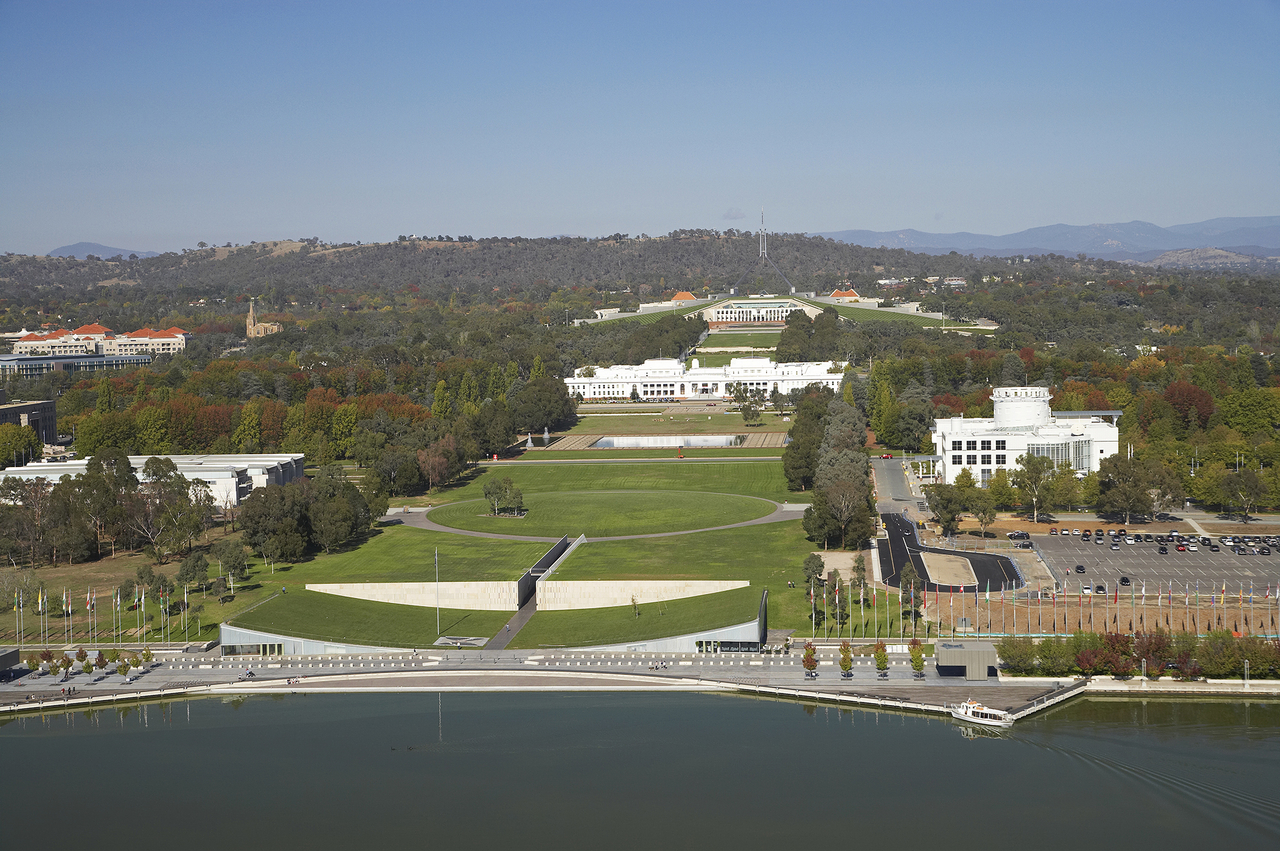The Federal Government has announced its intention to invest more than $315m in a national Aboriginal and Torres Strait Islander cultural precinct in the heart of Canberra. It already has a name: ‘Ngurra: The National Aboriginal and Torres Strait Islander Cultural Precinct’.
The Ngurra precinct will speak to the central place that Aboriginal and Torres Strait Islander people should hold in Australia’s story. It has two key elements:
A National Resting Place to house and care for repatriated ancestral remains of uncertain origin and any associated cultural material on their journeys back to their proper Countries.
A Culture and Knowledge Centre where Aboriginal and Torres Strait Islander Australia tells its own stories and celebrates the 65,000-year history of this nation. It will include education, exhibition and gallery space in a new fit-for-purpose home for AIATSIS – the relatively unknown Australian Institute for Aboriginal & Torres Strait Islander Studies – whose proposal this is.
It’s taken two decades of consultations to identify the need for a National Resting Place that would replace existing facilities in museums, which do not — in the view of most Aboriginal and Torres Strait Islander peoples — provide culturally-appropriate facilities for the care of ancestral remains. The National Museum, across Lake Burley Griffin, is currently the main body concerned with the delicate business of repatriating ancestral remains.
For more than 50 years, AIATSIS has been building a unique collection that has contributed to the understanding and appreciation of Aboriginal and Torres Strait Islander peoples’ cultures and heritage. The late Professor WEH Stanner was the initial contributor to the collection. Stanner was instrumental in the establishment of AIATSIS and his maps, sketches, notes, diaries, photographs, audio recordings, and publications are still greatly used.
The AIATSIS Collection of more than a million items is important both as a keeping place for culturally significant objects, and as a resource for anybody looking to improve their knowledge of Aboriginal and Torres Strait Islander history and culture.
The art and object collection, for instance, includes over 6000 items and continues to grow through donations and purchases. It reflects the diversity of Aboriginal and Torres Strait Islander cultural expression. It has a strong connection with the work of AIATSIS dating back to the early 1960s with particular strengths in late 20th-century and contemporary materials. However, not a single Emily Kngwarreye creation appears in its index, and no images are available of most artists’ works.
There are also 700,000 photographs relating to Aboriginal and Torres Strait Islander peoples, dating from the late 1800s to the present day. It is the world’s most comprehensive photographic record of Aboriginal and Torres Strait Islander peoples and ninety per cent of the collection is unique to AIATSIS.
Most of the estimated 250 Australian languages and 600-700 dialects are represented in the institute’s unrivalled language holdings including forty endangered languages. The word Ngurra – appears in many different Aboriginal languages as a word for ‘home’, ‘camp’, ‘a place of belonging’ or ‘a place of inclusion’.
There are 2,600 rare books and 12,800 manuscripts. And the film collection includes over 5000 film and video titles, prints of historical ethnographic films and other documentaries. Many of the films in the collection were produced by the predecessor Australian Institute of Aboriginal Studies Film Unit, which operated between 1961 and 1991.
In 2014, a body called Significance International summed up AIATSIS : “As an intergenerational keeping place for Indigenous Australians the AIATSIS collection is significant across all four categories – historic, artistic/aesthetic, research/scientific, and social/spiritual – and remains the most extensive and best contextualised collection of Indigenous Australia in the world. It is a site of pilgrimage”.
The Government has also announced a design competition for the Ngurra precinct and the structures within it. “A high quality design is needed to bring the concept to life, ensuring that Aboriginal and Torres Strait Islander cultures are embedded in the precinct”.
An independent jury will judge the entries and make its recommendation to government.
‘Ngurra: The National Aboriginal and Torres Strait Islander Cultural Precinct’ will sit in the Parliamentary Triangle, in Commonwealth Place close to the underappreciated Reconciliation Place and alongside other principal Australian cultural institutions.
The site is on one of the major axes of Walter Burley Griffin’s design for Canberra, in a straight line between Parliament House and the Australian War Memorial. It will seek to complement existing institutions including the Tent Embassy, National Library of Australia, Questacon, the National Portrait Gallery, the National Gallery of Australia, and the High Court of Australia.
AIATSIS CEO Craig Ritchie hopes: “It will be a place for discoveries by the tens of thousands of schoolchildren who visit Canberra each year, eager to learn. These activities support telling the story of the central and enduring place of Aboriginal and Torres Strait Islander cultures. A story that is over 65,000 years old”.
However, speaking at the Aboriginal Tent Embassy – which, oddly, is listed above as one of “the existing institutions that are located within the Parliamentary Triangle” – local Ngambri and Ngunnawal elder Matilda House-Williams said the plans from AIATSIS did not represent the traditional custodians of the land, and that the government had spoken to the wrong people. “A resting place should not be made in the Parliamentary Triangle, and this would not allow ancestors to rest in peace,” House-Williams said.
Meanwhile, Ngunnawal Elders Council Chair, Aunty Roslyn Brown said she was “absolutely blown away” by the announcement.
Oh dear, could this be Mparntwe/Alice Springs all over again? A National Aboriginal Art Gallery, talked about there for more than three years, still has no site. Meanwhile Adelaide’s Aboriginal Arts and Cultures Centre seems to have successfully managed its relations with Kaurna elders regarding site, management and has the advantage of 150 years of collecting by the South Australian Museum.



